The Evolution of Environmental Policies in the United States (Part 1): Encouraging Home Composting, PHA to Enter a Golden Age
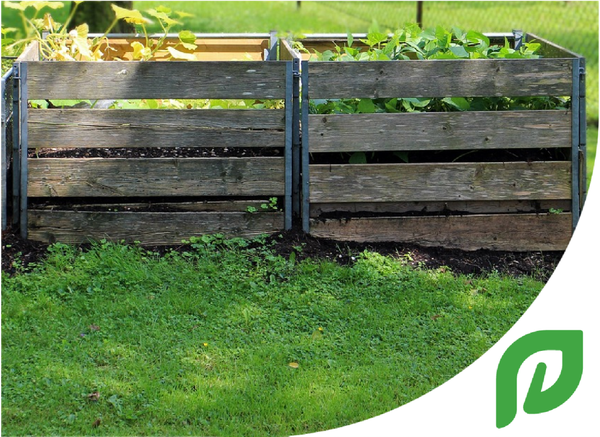

As a biodegradable material, PHA can be decomposed by microorganisms in the natural environment and converted into organic fertilizer, perfectly aligning with the resource utilization goals of home composting policies. Products made from PHA biomaterials, such as packaging materials and tableware, can be directly added to home compost after use, without requiring special treatment, reducing waste generation and improving resource utilization.
As a biodegradable material, PHA can be decomposed by microorganisms in the natural environment and converted into organic fertilizer, perfectly aligning with the resource utilization goals of home composting policies. Products made from PHA biomaterials, such as packaging materials and tableware, can be directly added to home compost after use without special treatment, reducing waste generation and improving resource utilization.
As a biodegradable material, PHA can be decomposed by microorganisms in the natural environment and converted into organic fertilizer, perfectly aligning with the resource utilization goals of home composting policies. Products made from PHA biomaterials, such as packaging materials and tableware, can be directly added to home compost after use without special treatment, reducing waste generation and improving resource utilization.
As a biodegradable material, PHA can be decomposed by microorganisms in the natural environment and converted into organic fertilizer, perfectly aligning with the resource utilization goals of home composting policies. Products made from PHA biomaterials, such as packaging materials and tableware, can be directly added to home compost after use without special treatment, reducing waste generation and improving resource utilization.
As a biodegradable material, PHA can be decomposed by microorganisms in the natural environment and converted into organic fertilizer, perfectly aligning with the resource utilization goals of home composting policies. Products made from PHA biomaterials, such as packaging materials and tableware, can be directly added to home compost after use without special treatment, reducing waste generation and improving resource utilization.
As a biodegradable material, PHA can be decomposed by microorganisms in the natural environment and converted into organic fertilizer, perfectly aligning with the resource utilization goals of home composting policies. Products made from PHA biomaterials, such as packaging materials and tableware, can be directly added to home compost after use without special treatment, reducing waste generation and improving resource utilization.
As a biodegradable material, PHA can be decomposed by microorganisms in the natural environment and converted into organic fertilizer, perfectly aligning with the resource utilization goals of home composting policies. Products made from PHA biomaterials, such as packaging materials and tableware, can be directly added to home compost after use without special treatment, reducing waste generation and improving resource utilization.
Home Composting vs. Industrial Composting
Home Composting vs. Industrial Composting
Home Composting vs. Industrial Composting
Home Composting vs. Industrial Composting
Home Composting vs. Industrial CompostingComposting, simply put, relies on microorganisms to break down organic waste, but the differences between home and industrial settings determine their distinct characteristics:
Composting, simply put, relies on microorganisms to break down organic waste, but the differences between home and industrial settings determine their distinct characteristics:1. Processing Conditions and Cycles
1. Processing Conditions and Cycles-
Industrial Composting: Like a "high-temperature sauna" (50-70°C, plus high humidity), it can rapidly degrade within 30-180 days, suitable for processing materials like PLA that require high temperatures for decomposition. -
Home Composting: Depends on natural conditions, nurturing microorganisms with kitchen scraps and fallen leaves, the cycle is longer (typically not exceeding one year), but it has a "zero equipment threshold," making it ideal for decentralized waste management at the household or community level.
2. Application Scenarios
2. Application Scenarios-
Industrial composting: Often used in municipal or commercial projects, led by the government, such as curbside collection programs launched in some U.S. states, where residents' yard and food waste is regularly collected and sent to centralized facilities for industrial composting.
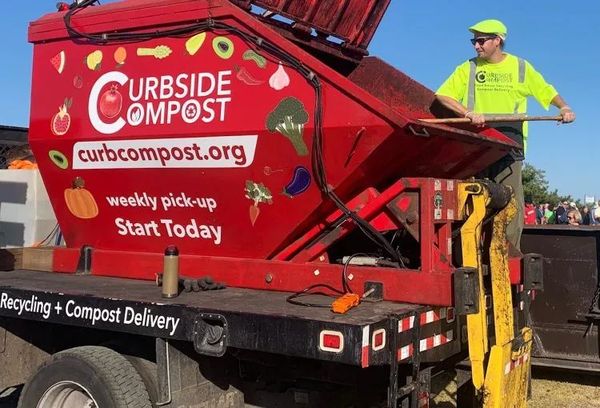

-
Home composting: Taking a "people-friendly" approach, with greater emphasis on education and community involvement. For example, the community composting sites in Queens, New York, are managed by resident volunteers.


Policy Evolution: From "Landfill Ban" to "Mandatory Sorting"
Policy Evolution: From "Landfill Ban" to "Mandatory Sorting"
Policy Evolution: From "Landfill Ban" to "Mandatory Sorting"
Policy Evolution: From "Landfill Ban" to "Mandatory Sorting"
Policy Evolution: From "Landfill Ban" to "Mandatory Sorting"
Policy Evolution: From "Landfill Ban" to "Mandatory Sorting"The "growth history" of composting policies in the United States reflects an upgrade in environmental concepts from "end-of-pipe treatment" to "source reduction":
The "growth history" of composting policies in the United States reflects an upgrade in environmental concepts from "end-of-pipe treatment" to "source reduction":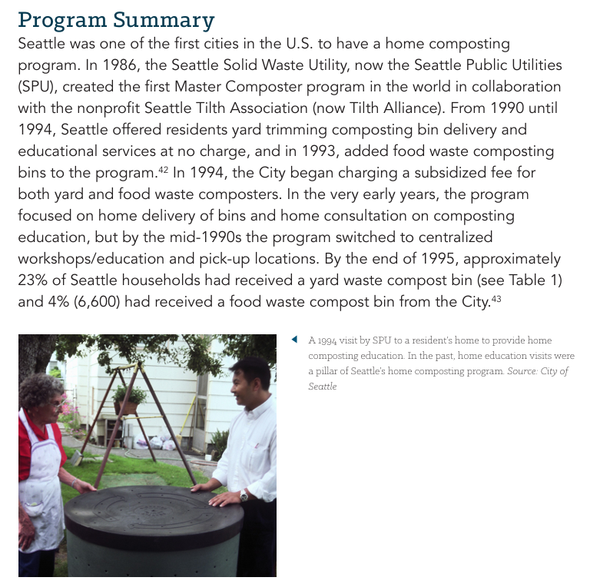

In the 2000s, food waste became a policy focus. In 2009, California took the lead in implementing a mandatory composting law, requiring residents to sort and dispose of food waste. Violators could be fined up to $500.
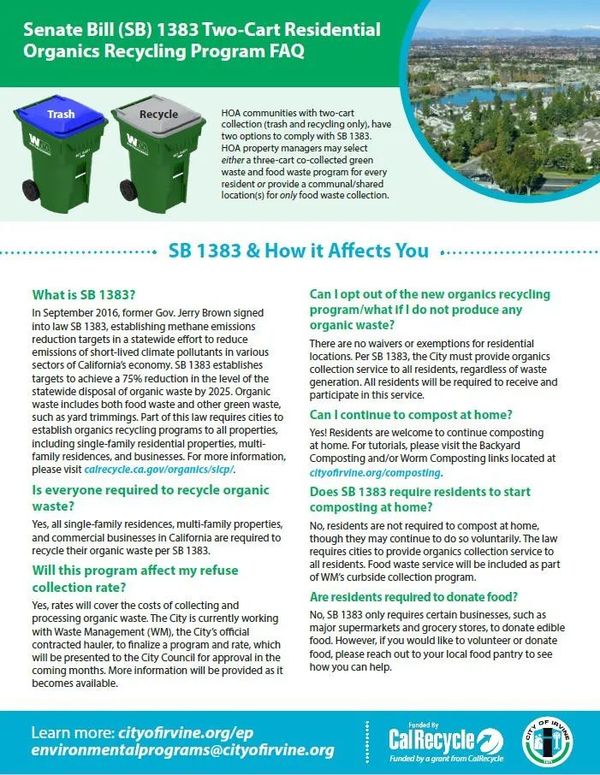

Figure | Partial Content of California SB1383 Bill
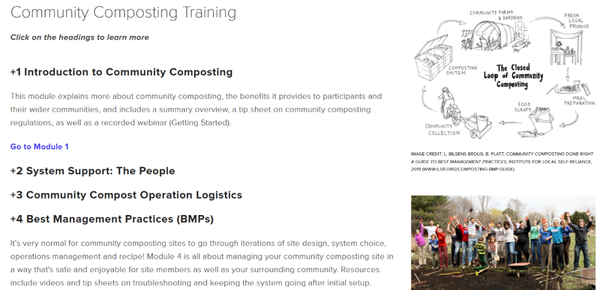

Image | Community composting training in Vermont
By reviewing the evolution and policy changes of home composting in the United States, it is not hard to see that composting has become an effective solution for organic waste. In recent years, the federal and state governments of the US have been accelerating the legislation on composting. The implementation of these policies has provided a broad market space and application prospects for biodegradable materials represented by PHA.
Facing increasingly severe environmental challenges, how to integrate existing policies and promote the widespread use of biodegradable materials has become an important issue before us. In our next post, we will combine the current hotspots of relevant policies in the US to reveal how PHA materials, with their unique advantages, have become the key to solving the problem of organic waste disposal.
【Copyright and Disclaimer】The above information is collected and organized by PlastMatch. The copyright belongs to the original author. This article is reprinted for the purpose of providing more information, and it does not imply that PlastMatch endorses the views expressed in the article or guarantees its accuracy. If there are any errors in the source attribution or if your legitimate rights have been infringed, please contact us, and we will promptly correct or remove the content. If other media, websites, or individuals use the aforementioned content, they must clearly indicate the original source and origin of the work and assume legal responsibility on their own.
Most Popular
-

List Released! Mexico Announces 50% Tariff On 1,371 China Product Categories
-

Nissan Cuts Production of New Leaf EV in Half Due to Battery Shortage
-

New Breakthrough in Domestic Adiponitrile! Observing the Rise of China's Nylon Industry Chain from Tianchen Qixiang's Production
-

Dow, Wanhua, Huntsman Intensively Raise Prices! Who Controls the Global MDI Prices?
-

Mexico officially imposes tariffs on 1,400 chinese products, with rates up to 50%






